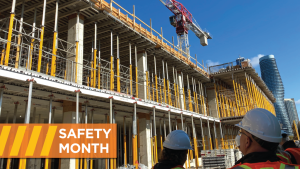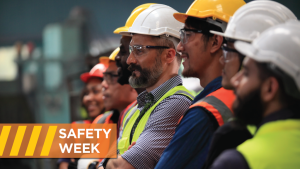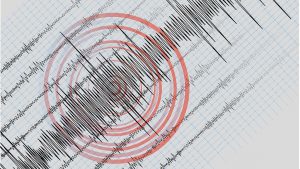Faced with a growing number of fatalities and rising costs of serious injury accidents, the Saskatchewan government and Saskatchewan Workers’ Compensation Board (WCB) have developed a new three-year Fatalities and Serious Injury Strategy.
The strategy is described by Saskatchewan WCB’s Kevin Mooney, vice-president prevention and employee services, as “unique and innovative for Canada”. While the strategy draws components from other jurisdictions, the direction it takes is new and attempts to focus on fatalities and serious injury accidents in targeted industry sectors. “This is very much grass roots,” he said.
Saskatchewan has some of the highest injury rates in Canada regardless of aggressive safety programs which have reduced injury rates. “Despite more than a decade of improvement in the overall provincial total injury rate (TIR), a recent analysis indicates areas of concern,” said the strategy report.
Mooney nutshells the issue: while the TIR number declines, it is shielding real concerns — deaths and severe injuries. “In the past we focused on the frequency of accidents,” he said. “What the new strategy looks at is frequency and severity of injuries and the risk and that is pointing us in new areas.”
The strategy identifies four main areas, based on 2018 statistics, where fatalities are occurring: asbestos exposure, fall from heights, work-related motor vehicle incidents (MVI) and cancers in firefighters. It identifies the need to better educate and protect vulnerable workers such as those for whom English is a second language or who do not know employee rights. In 2018, WorkSafe Saskatchewan figures found there were 48 work-related deaths compared with 27 in 2017, an increase of 78 per cent. However, 2017 was a 15-year low compared to an average annual fatality figure of 37 over that time frame.
The strategy also includes a new WCB definition for serious injury claim, which will now include a list of indicators such as a fatality, more than 50 days of compensation paid, a Ministry of Labour Relations and Workplace Safety (LRWS) referral flag, a primary psychological/mental health case, and a permanent functional impairment greater equal to 10 per cent. One or more of the indicators has to be met to sustain a serious injury claim.
Based on a new definition of a serious injury, data indicates that from 2010 to 2018, 22,594 workers suffered a serious injury, which often resulted in life altering implications for the individual and their family. Closer analysis of this data also indicates that although the time loss and total injury rates have seen a slow and steady decline, there are approximately 2,400 serious injuries annually and this key indicator has not been decreasing. According to the strategy report, those injuries have represented only nine per cent of all claims but were 86 per cent of compensation days and 81 per cent of costs.
The strategy, announced in December 2019, builds on initial work started that year and runs into 2021. “But, it is really a living strategy,” said Saskatchewan LRWS deputy minister Donna Johnson. The strategy evolved thru a partnership between LRWS and Saskatchewan WCB called WorkSafe Saskatchewan, whose working group launched the concept following consultation with 50 stakeholders. Johnson said the intent is for the strategy to evolve as more data points to new areas of concern. “We see this as a rolling strategy rather than one with a finite birth and sunset date.”
Part of the earlier work done in 2019 involved launching seven public awareness campaigns focused upon prevention including educating workers and employers on the importance of fall protection on construction worksites and also asbestos hazards. WorkSafe Saskatchewan partnered with the Saskatchewan Construction Safety Association (SCSA).
“We are pleased with the strategy,” said SCSA president Collin Pullar, adding that it signals to the business community this is a document they need to recognize. “It is not that we don’t know how to deal with major risk. The big challenge is with the business culture and work culture in general. This document really highlights to the business and work communities that these issues (in the strategy) are literally killers and there is the opportunity to do something about it.” The 16-page strategy document also proposed standardized province-wide training, an aspect that Pullar sees as beneficial to industry members who want to ensure they are working to a recognized standard.
Pullar said the strategy also hits an important area — vulnerable workers. One of the most at-risk is the young worker as “a good quarter” of injuries occur to people under the age of 25 years, he said, as well as the new Canadians. “They are new to the industry or the province and country,” he said and may have no understanding of employee safety or worker rights and may work to a standard derived from their own foreign culture. They may take on work without knowing the heath-risk consequences. “They are put in a vulnerable spot and these are the groups we need to connect with,” he said.
Asbestos fatalities lead the as the main cause of death with the report finding that from 2010 to 2018 there were 87 such deaths, with MVI causing 56 deaths, 42 people died from heart attacks, 28 firefighters from related cancers, and 23 workers fell to their death from heights, while 11 died when struck by vehicles. By comparison, all other categories for the same period totalled only 107, with aviation deaths leading. All work-related WCB recorded deaths tallied 354.











Recent Comments
comments for this post are closed